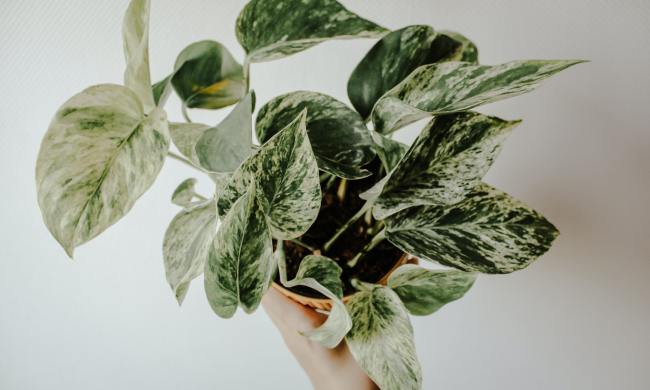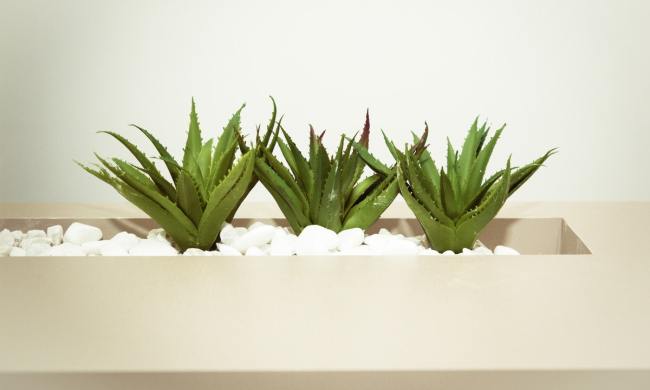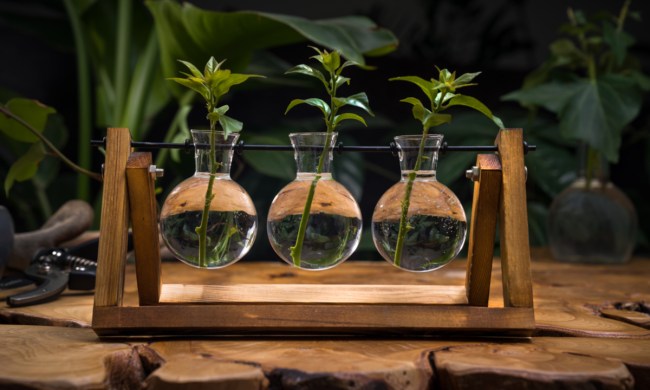Is it Christmas time if there isn’t any mistletoe hanging on a door? As plant lovers, it’s sometimes easy to forget that these holiday plants like mistletoe, Christmas cactus, and others are actual plants that grow in the wild. And in the case of mistletoe, it’s a unique plant with a rich history and a modern twist that’s bound to make a few people blush each season.
So if you’re here to learn more about this plant and maybe find out if you can grow it in your home, then you’ve come to the right place!
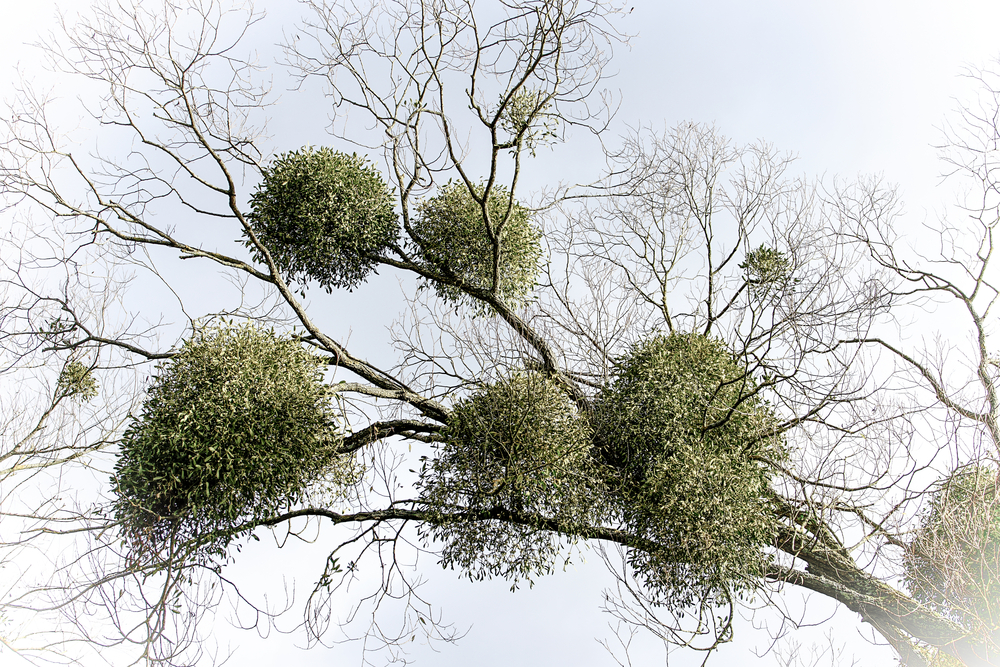
What is mistletoe?
First, let’s talk about what kind of plant mistletoe is; this holiday favorite is actually a hemiparasitic plant. This means that it lives off of other plants, often apple, lime, hawthorn, or poplar trees. However, it only gets its water and nutrients from the host plant since it can make its own food with its green photosynthesizing leaves; that’s why it’s hemiparasitic. The seeds are pollinated in a few ways, but often what happens is a bird will eat the plant, get a seed stuck on its beak, and will then rub it off on a branch where the seed will germinate and begin to grow on the tree. Because of their parasitic nature, mistletoe can be a harmful plant, especially to apple orchards. The plant can get so big and take too much from the host and kill the tree. As you can imagine, this is devastating to an orchard.
The history of mistletoe is long-standing and spreads across many countries, nations, religions, and cultures. In Greek mythology, it was used to access the underworld, but it was a sign of love, peace, and understanding to the Roman people. The Celtic people used to view it as a sacred plant, and pre-Christian Europeans considered mistletoe a symbol of romance, vitality, and fertility. But no matter what you believe, there’s no denying this plant is gorgeous.
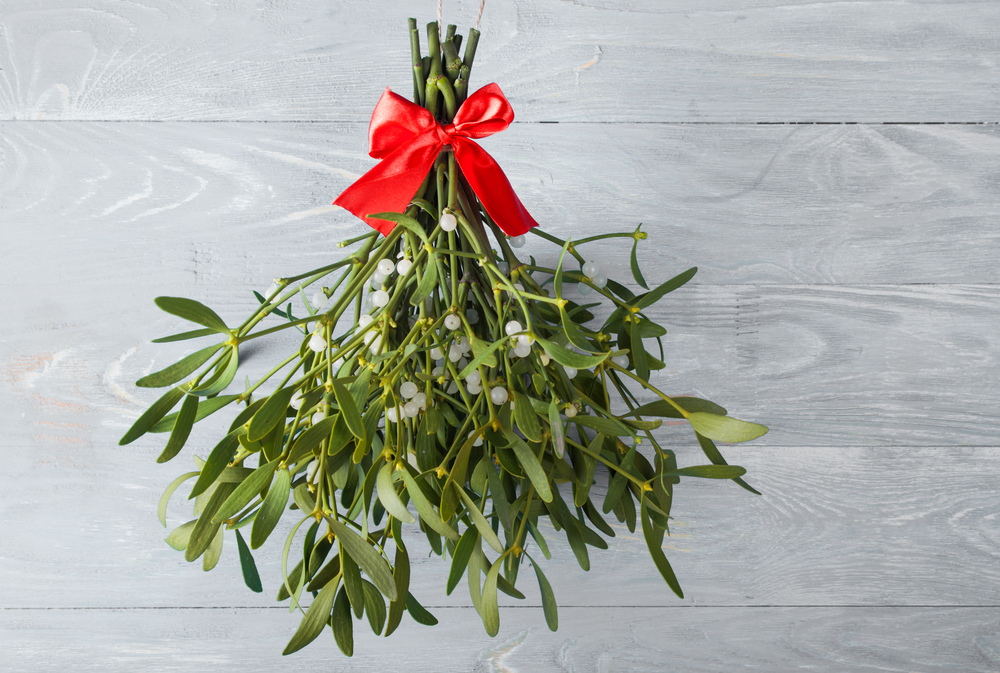
Care tips for mistletoe
To grow mistletoe at home, you’ll need a host plant, and while this isn’t hard to do, it can be tricky to perfect the host/parasite balance required to keep both plants alive and healthy. So let’s go over what it needs to thrive so you can try to grow this lovely plant yourself.
Water
The parasitic nature of mistletoe means it will take whatever water it needs from the host plant that it’s growing on. So to provide it with enough water, you’ll have to be sure the host tree has enough water. This could prove to be a tricky balance. You’ll want to give the tree more water than you typically would, so there’s enough for both the tree and the mistletoe, but you don’t want to overwater it and risk root rot. So pay close attention to your host plant to ensure you don’t mess up the watering.
Light
For a healthy and happy mistletoe plant, you’ll want to provide it with ample bright and direct sunlight. They’re used to being high in trees and getting a lot of sunlight throughout the whole day. Be sure wherever you plant the host tree is sunny, and if growing indoors, find a bright, south-facing window to ensure it gets enough sunshine.
Food
Since mistletoe gets its food from the host plant, you’ll need to make sure the host gets plenty of fertilizer. To ensure both plants are happy, look into what the tree needs to thrive and apply it a little more often than you usually would. Watch out for signs of overfeeding, and keep checking on both plants to see if they’re showing signs of needing more food. The host plant will likely show signs of distress first since mistletoe will suck what they need from the tree.
Temperature
Mistletoe is very hardy and will survive in extreme conditions even up to negative 40 degrees Fahrenheit; you’ll likely need to worry more about the host plant.
Toxicity
It’s crucial to note that mistletoe is poisonous to both humans and animals. While it’s improbable to cause death, it’s not worth the risk. So even if you’re not growing it in your home but plan to use it in decoration, you’ll want to be sure that no curious kids or pets will be able to reach it. Some of the symptoms of ingested mistletoe are blurred vision, fever, hallucination, diarrhea, nausea, vomiting, slowing heart rate, and has even been known to cause miscarriages in pregnant women.
So mistletoe isn’t the easiest plant to grow, but it’s a pretty plant with delicate berries, and if you can grow it yourself, you have free Christmas decorations! Just be sure you’re caring for the host plant as much as or even more than the mistletoe plant, and keep it out of the reach of kids and pets.
